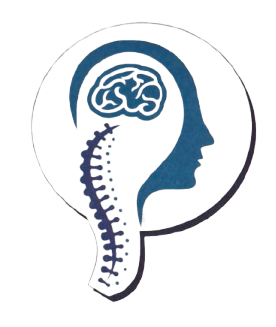Guillain-Barré Syndrome (GBS) is a rare but serious condition. This illness affects the nerves and can cause muscle weakness and sometimes paralysis. Recognizing early signs of Guillain-Barré Syndrome is vital. Prompt diagnosis and treatment are important to prevent severe health issues. Spotting Guillain-Barré Syndrome symptoms early ensures timely medical care, potentially improving outcomes. In this guide, we’ll explore how to identify the symptoms, understand the diagnosis, and learn about treatment and recovery options.
Understanding Guillain-Barré Syndrome: Symptoms & Diagnosis
Guillain-Barré Syndrome symptoms can vary. The primary symptom is weakness, which often starts in the legs and spreads to other parts of the body. Some people experience tingling or a pins-and-needles sensation, particularly in the fingers and toes. While many cases involve a progressive weakness, symptoms can differ from one person to another.
Other typical Guillain-Barré Syndrome symptoms include difficulty walking, clumsiness, or feeling sensations like pain or cramps. Sometimes, it affects other parts like the face, causing trouble in moving the eyes or having a drooping mouth.
However, it’s crucial to note some early signs of Guillain-Barré Syndrome might be subtle or confused with other conditions. Symptoms like fatigue or occasional tingling can seem normal but if these persist or worsen, it’s time to consult a doctor.
Diagnosing GBS involves several steps. Initially, healthcare providers check symptoms and medical history. Guillain-Barré syndrome diagnosis might include tests such as:
- Cerebrospinal fluid examination: A small amount of spinal fluid is taken from the lower back to be tested. This can show changes that help in diagnosing GBS.
- Electromyography (EMG): This test records electrical activity in the muscles and helps confirm nerve issues.
- Nerve conduction studies: These tests measure the speed of signals in the nerves.
Understanding the causes of Guillain-Barré syndrome is essential too. Often, GBS follows an infection. Infections can trigger the immune system to attack nerve tissues instead of germs, leading to the symptoms. Knowing when to seek medical help ensures early diagnosis, which can change the treatment course and recovery.
Early detection of Guillain-Barré syndrome symptoms makes a big difference. Contact a healthcare provider if you experience unusual weakness or tingling that spreads or worsens. Catching Guillain-Barré syndrome diagnosis early allows for interventions that may prevent severe complications.
Treatment & Management of Guillain-Barré Syndrome
When it comes to Guillain-Barré syndrome treatment options, early action is key. Treatments can prevent further damage and help manage symptoms.
Common Guillain-Barré syndrome treatment options include:
- Intravenous immunoglobulin (IVIG): Patients receive healthy antibodies intravenously. This treatment can reduce harmful antibodies that might attack the nerves.
- Plasma exchange (plasmapheresis): Blood is filtered to remove unwanted antibodies, which may help in recovery.
Both treatments aim to reduce nerve damage and manage symptoms effectively. In some cases, steroids are also used.
Different approaches might be considered depending on the person, including children and pregnant women. For pregnant women, doctors carefully choose treatments to avoid harm to the fetus while still providing effective care.
Managing complications is another aspect of treating GBS. It’s possible to encounter treatment-related fluctuations. Hence, ongoing care and reviews are necessary to adapt the Guillain-Barré syndrome treatment options according to individual needs.
On the management side, lifestyle adjustments are vital. Patients might need physical therapy to regain muscle movements and strength. Cardio exercises help maintain heart health, and a balanced diet supports a strong immune system.
Ongoing Guillain-Barré syndrome recovery management is crucial. Preventive measures like getting vaccines might help to reduce the likelihood of relapse. Awareness of potential dealing with Guillain-Barré syndrome relapse helps in managing health to avoid setbacks.
Recovery & Outlook: Life After Diagnosis
Guillain-Barré syndrome recovery varies among individuals. Most people fully recover, but it can be a slow process. Generally, the recovery might take weeks to several months, sometimes even a year or more. The Guillain-Barré syndrome prognosis depends on factors like age, health status, and how quickly treatment started.
Recovery includes:
- Physical therapy: It helps regain strength and movement. Simple exercises and stretches become a significant part of daily routines.
- Pain management: Pain medications and treatments like heat therapy help ease discomfort.
- Emotional support: Sometimes, support groups or counseling help patients deal with emotional stress.
Handling Guillain-Barré syndrome prognosis involves focusing on rehabilitation. Regular check-ups track progress to ensure no relapses occur.
Remember, help is always available. Reach out to support networks, healthcare providers, and patient advocacy groups for assistance in navigating Guillain-Barré syndrome recovery.
Dealing with this condition can be challenging, but knowing you have resources and support makes a big difference. Everyone’s journey is unique, but optimism and a proactive approach can strongly impact recovery.
Guillain-Barré Syndrome (GBS) is a rare but serious condition that affects the nervous system, often beginning with symptoms such as weakness, tingling, or numbness in the limbs. Early detection and timely medical intervention are crucial to prevent complications and ensure proper recovery. If you or someone you know is experiencing signs of GBS, it’s important to seek professional help immediately.
At Narayana Neuro Clinic, our experienced neurologists specialize in diagnosing and treating Guillain-Barré Syndrome, providing personalized care to manage symptoms and improve outcomes.
Consult Narayana Neuro Clinic today to get the expert guidance and treatment you need for a speedy and effective recovery.

